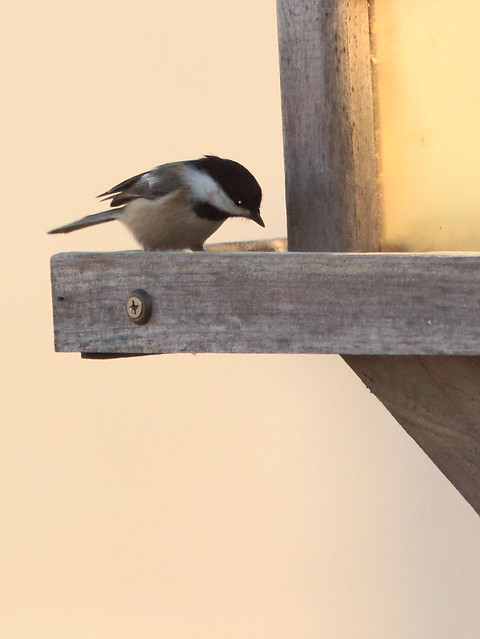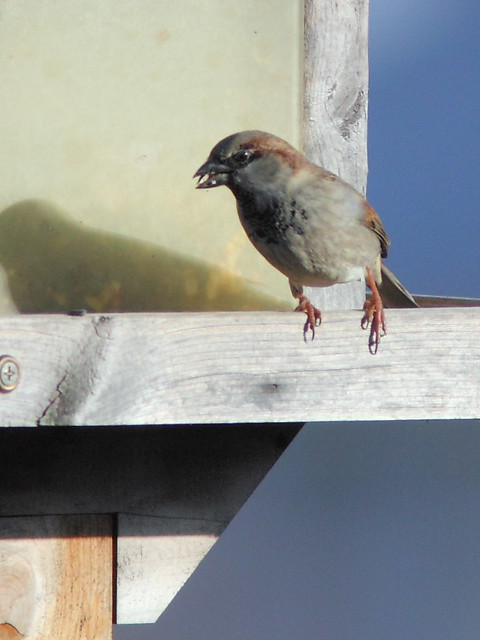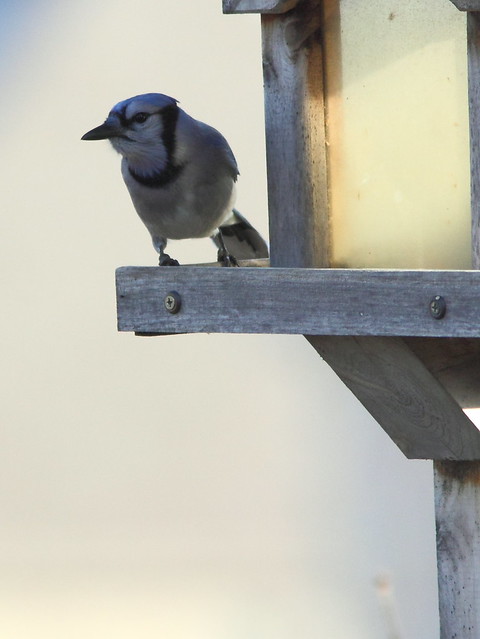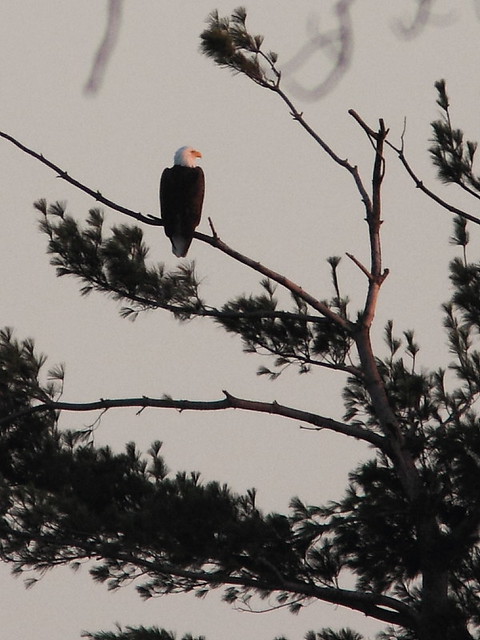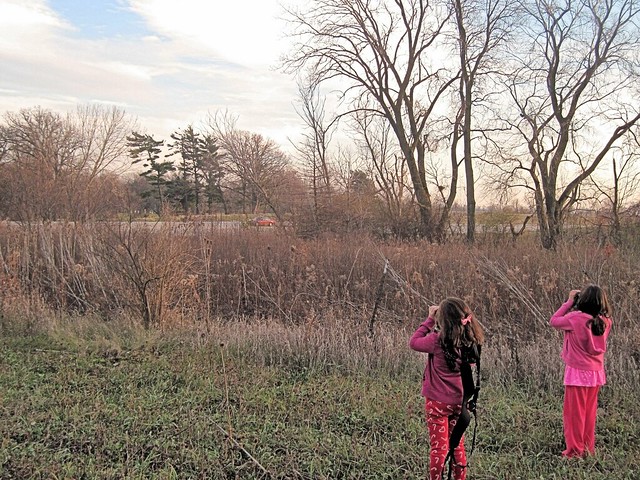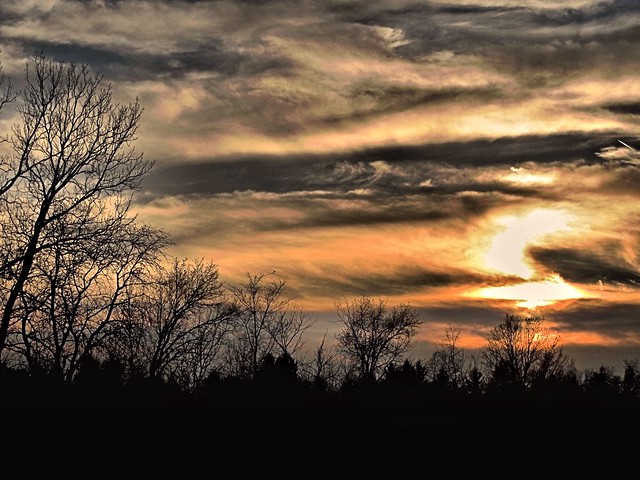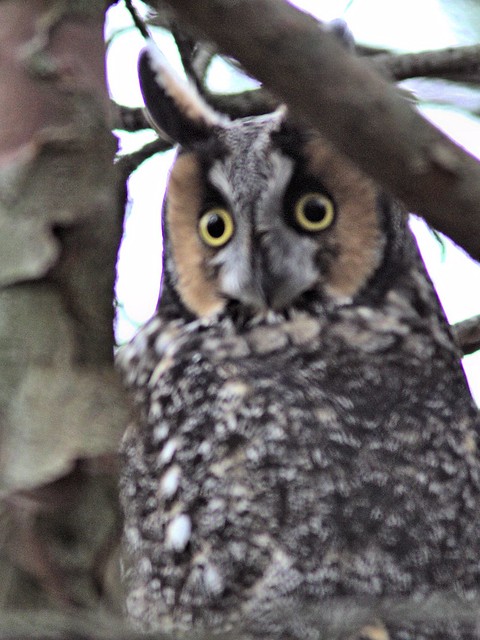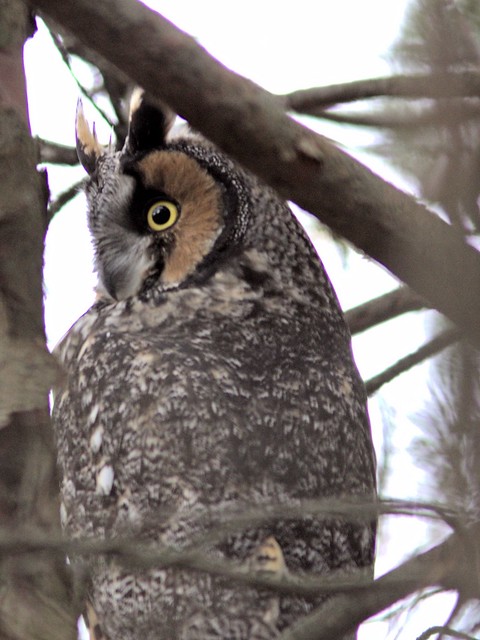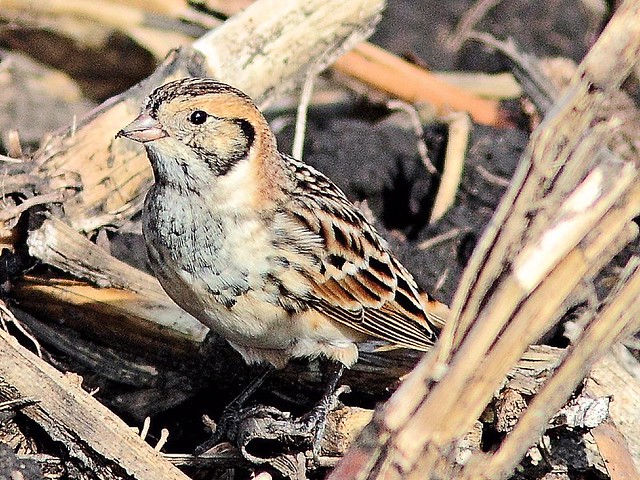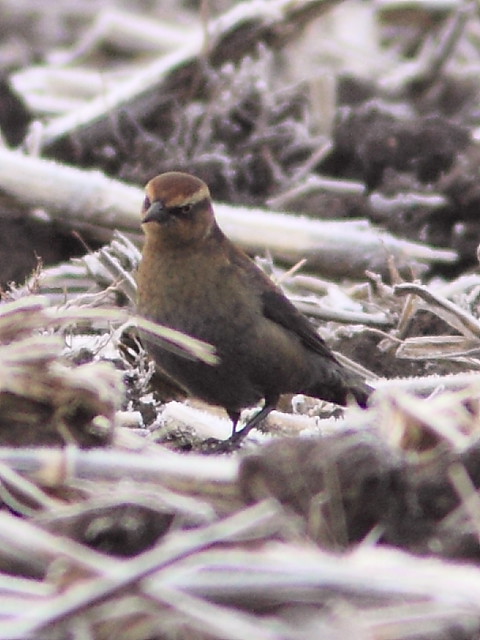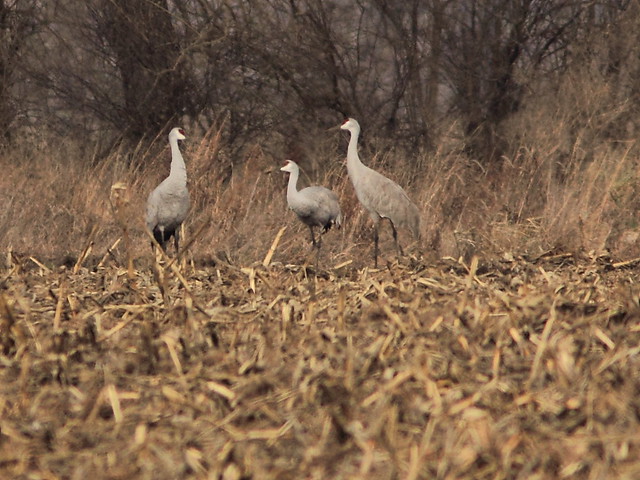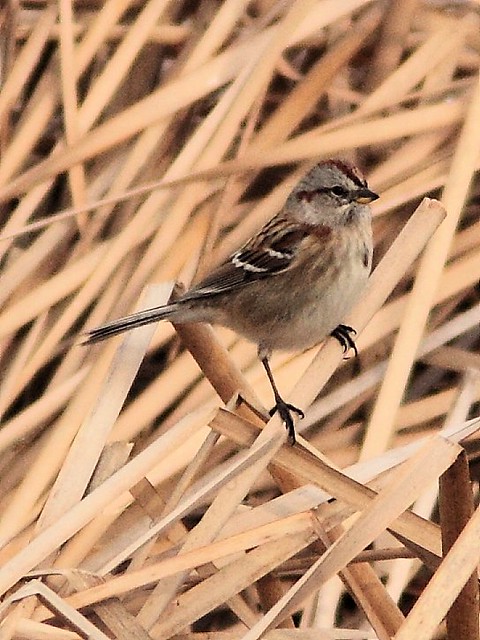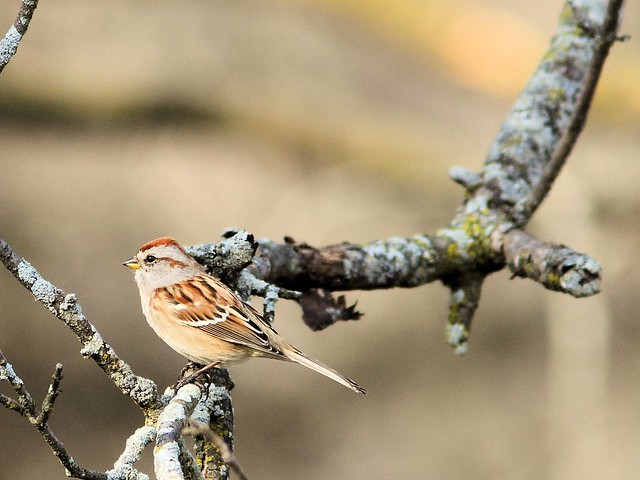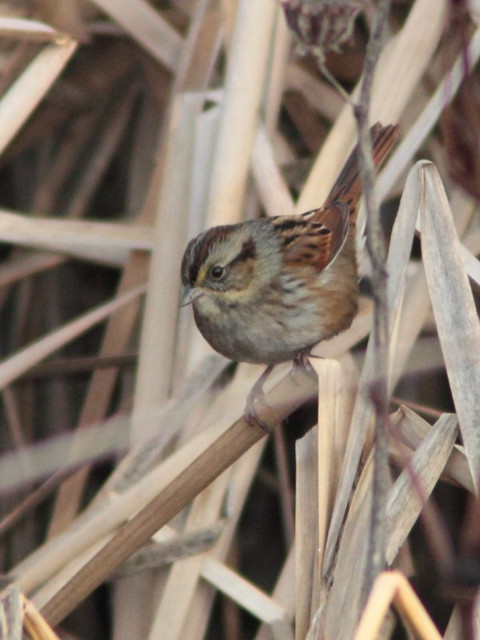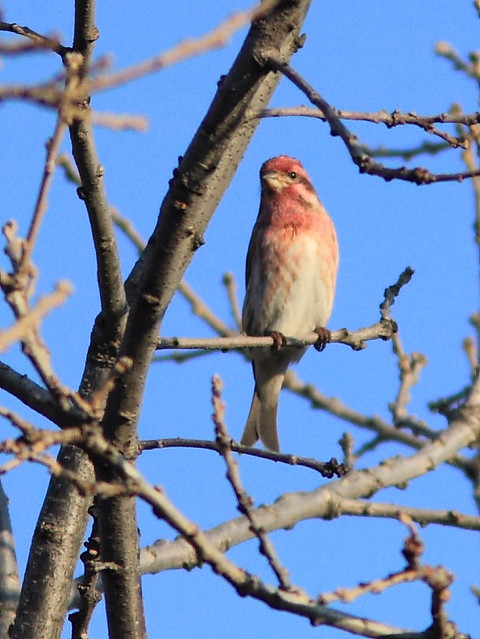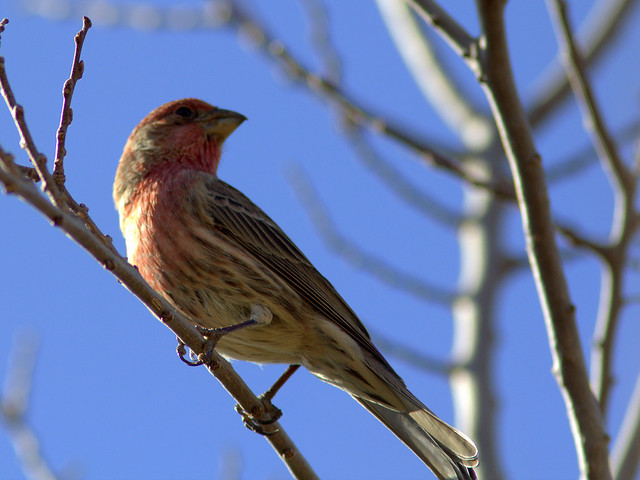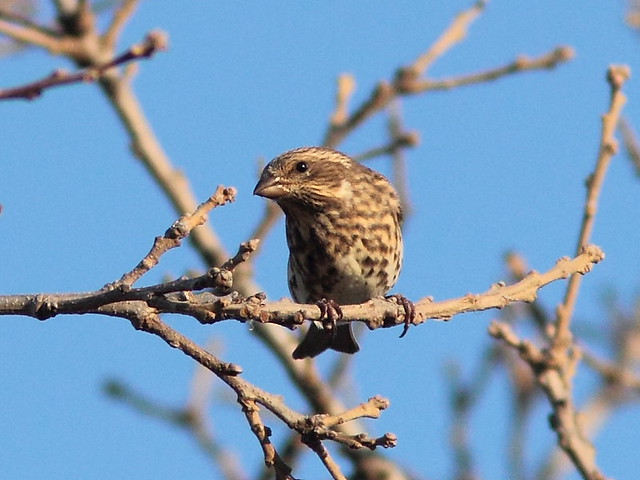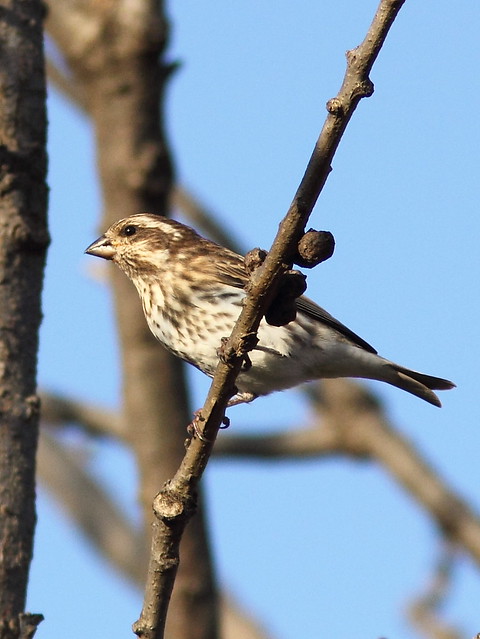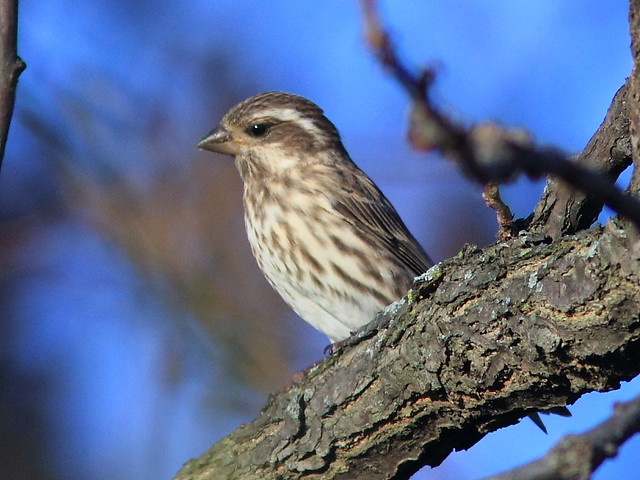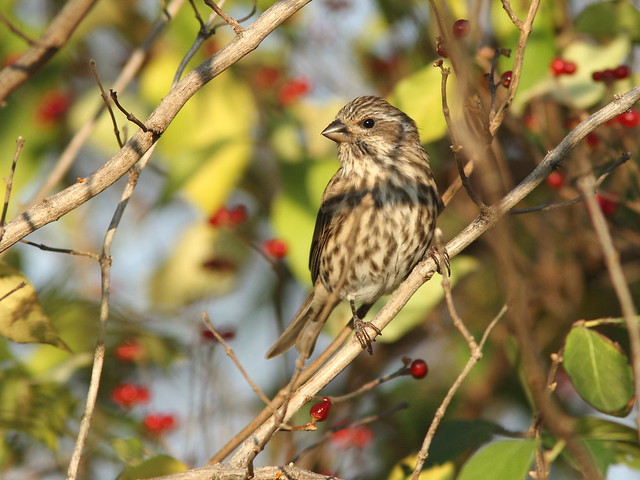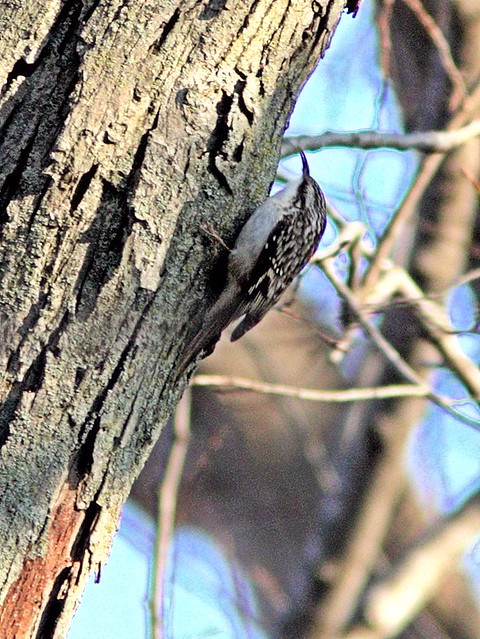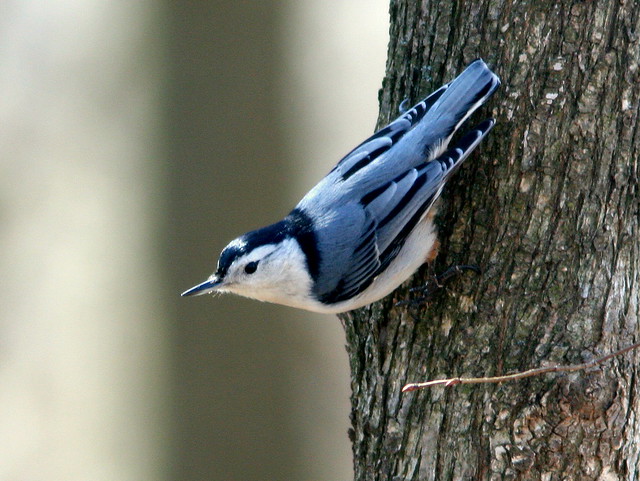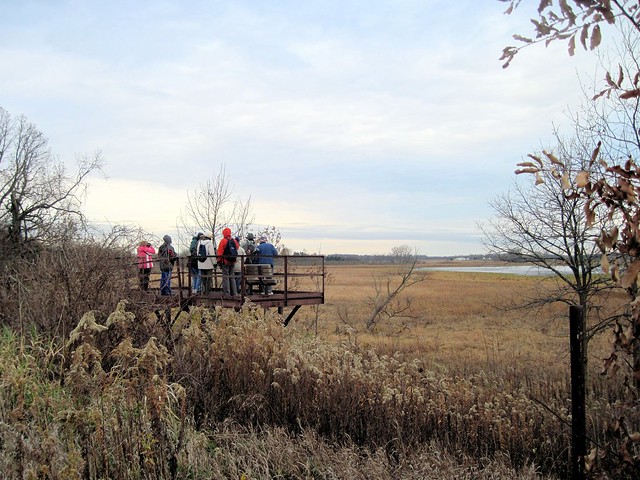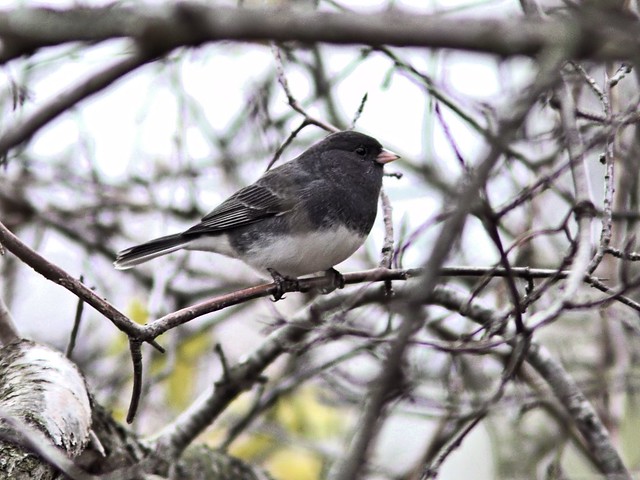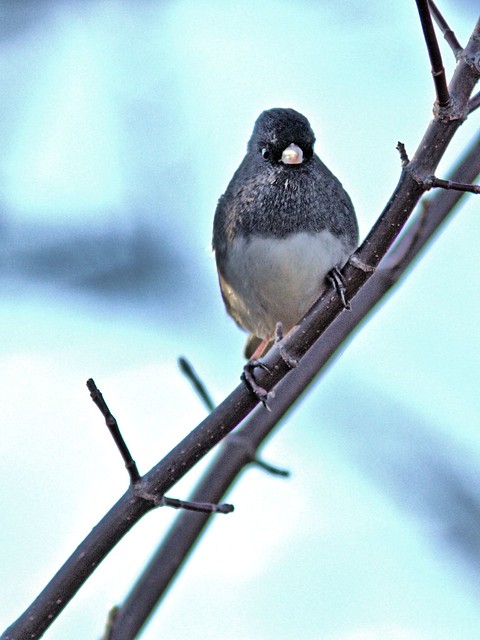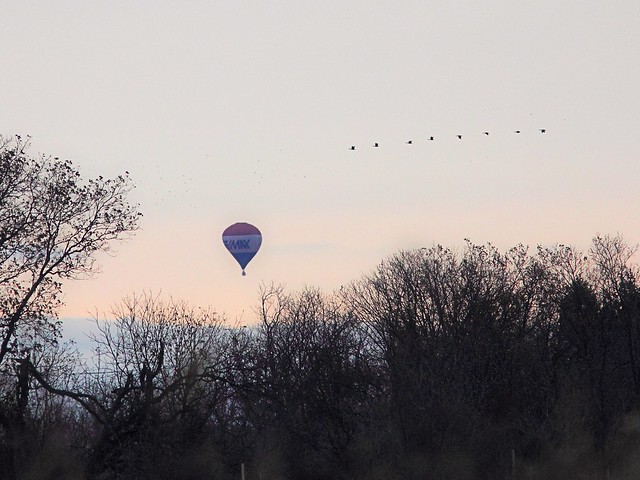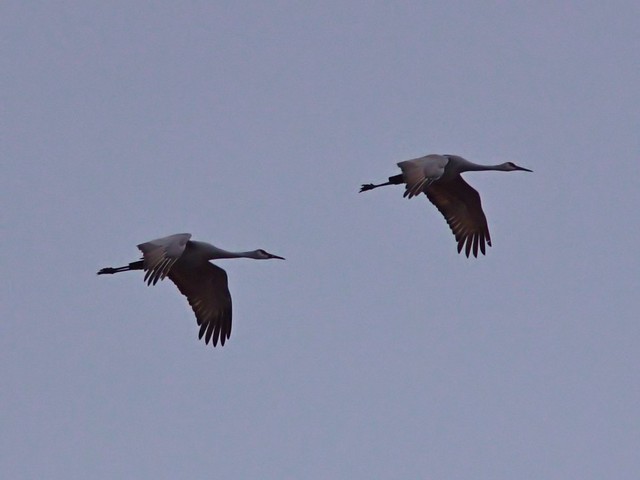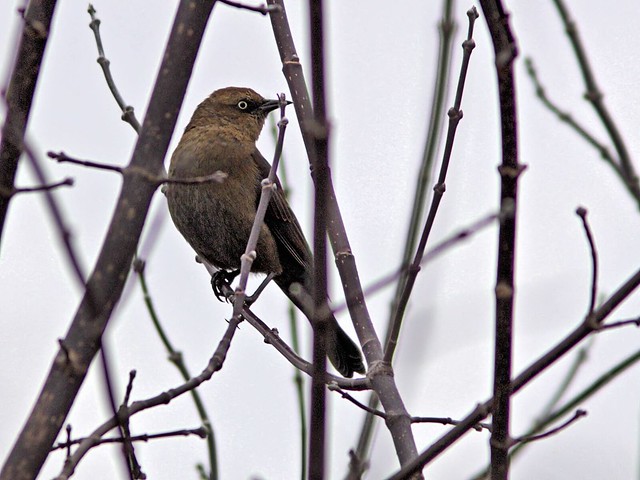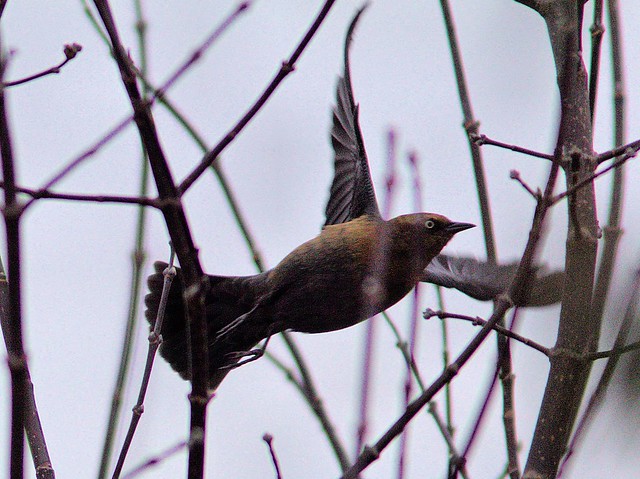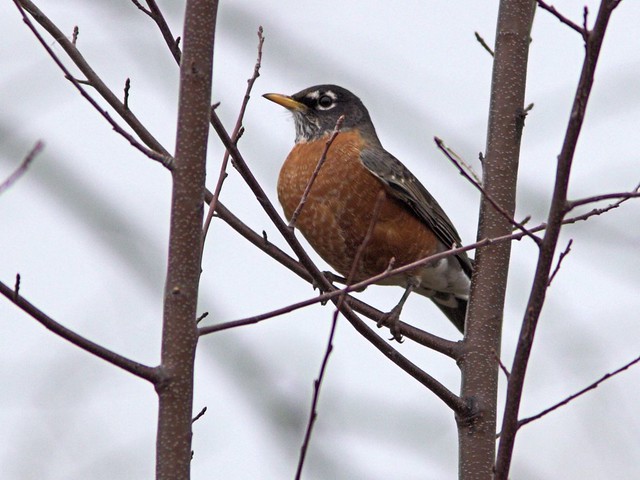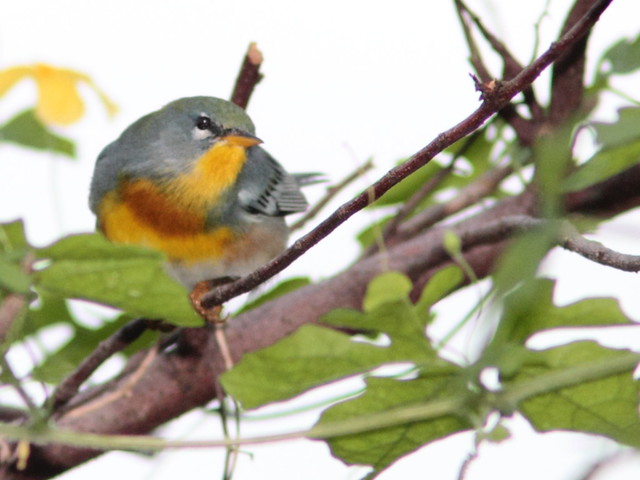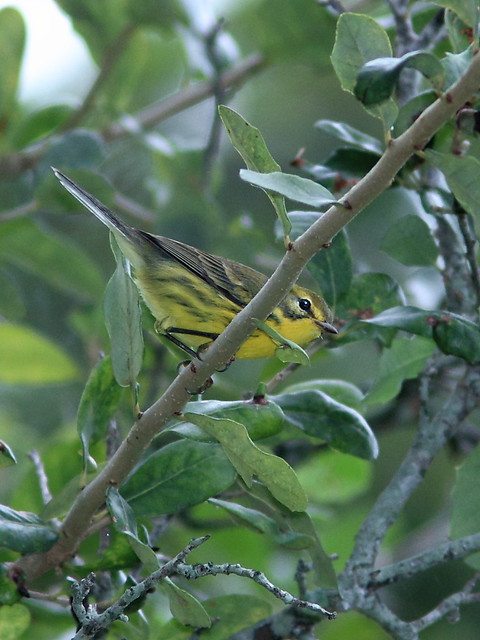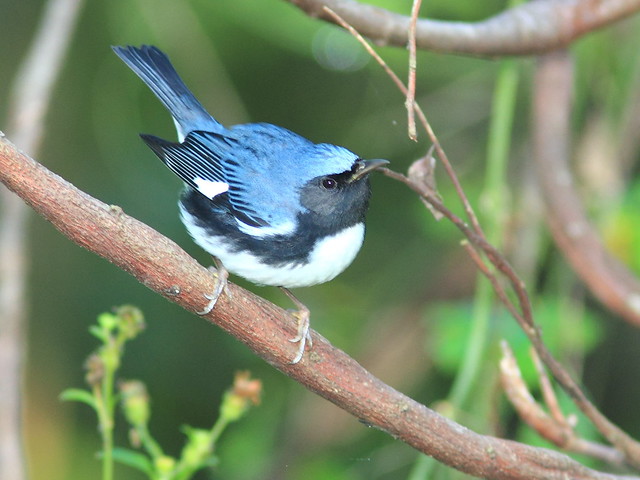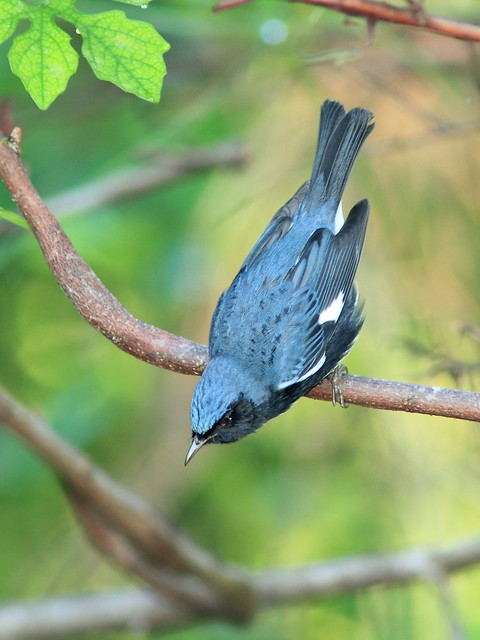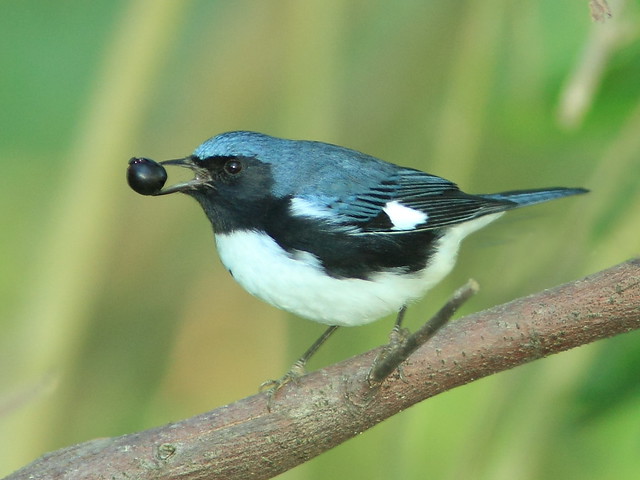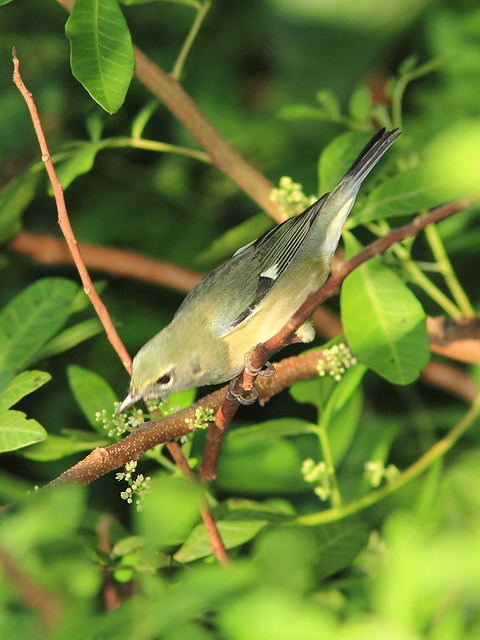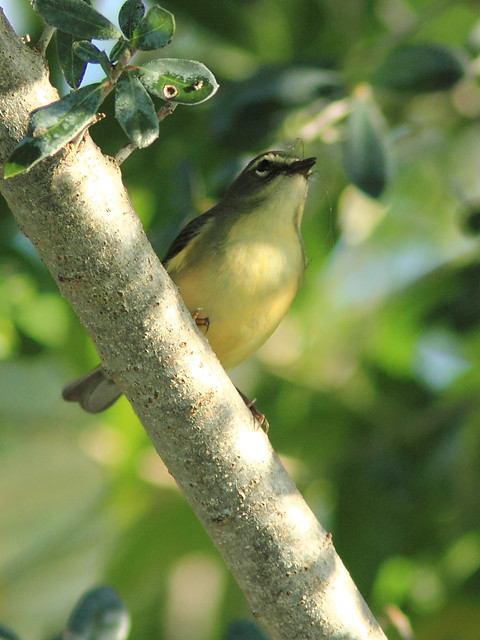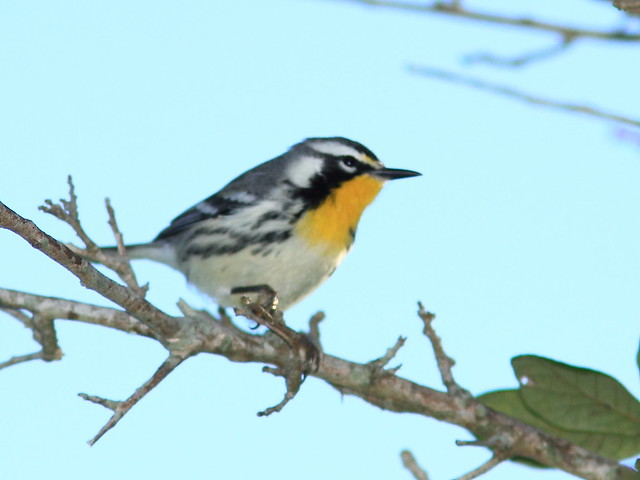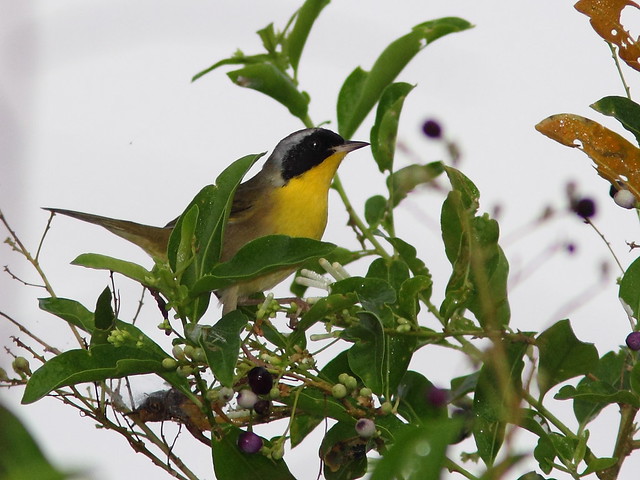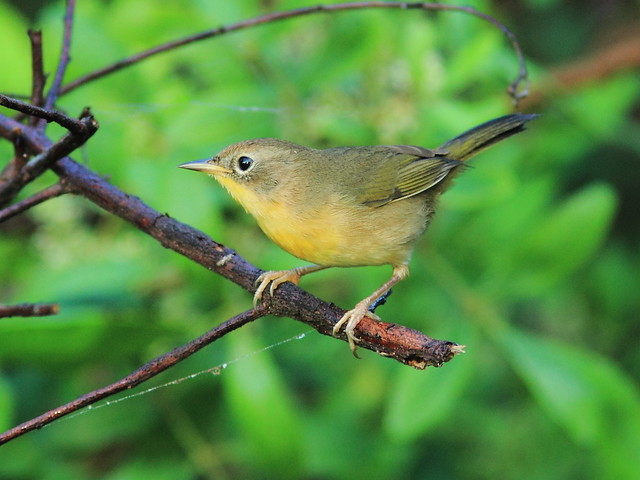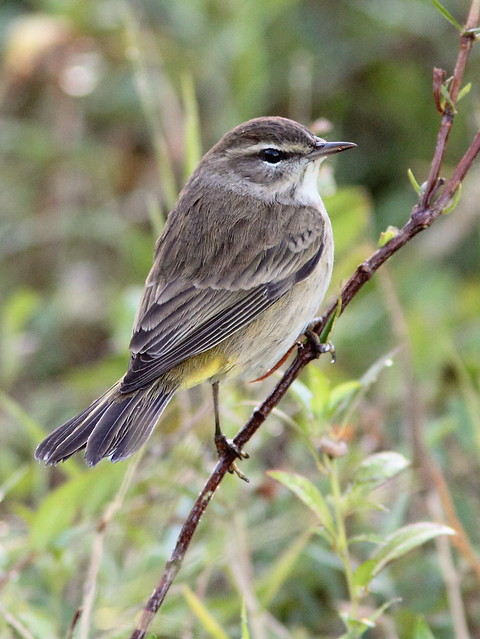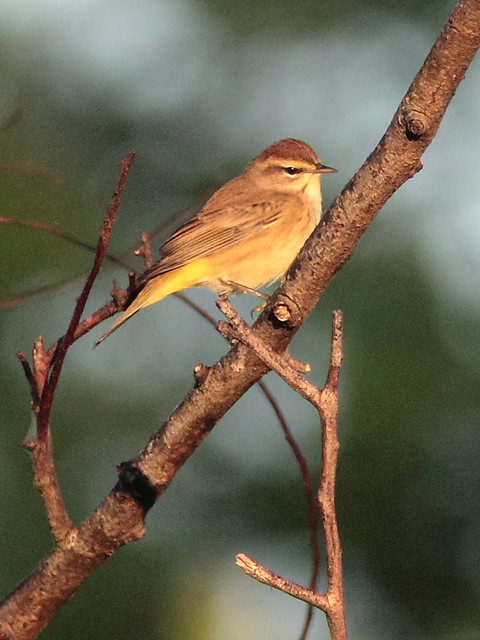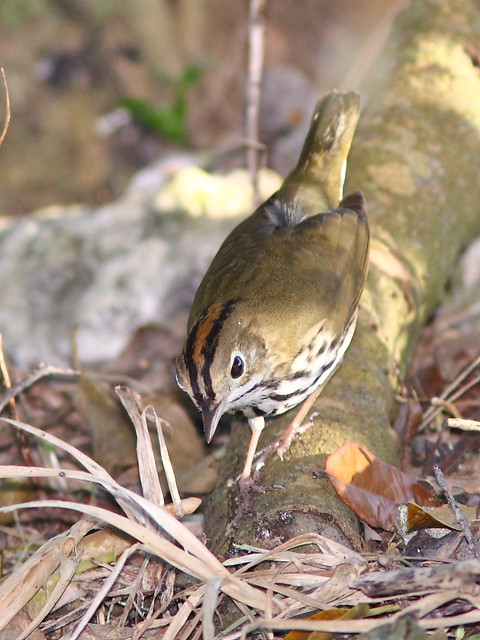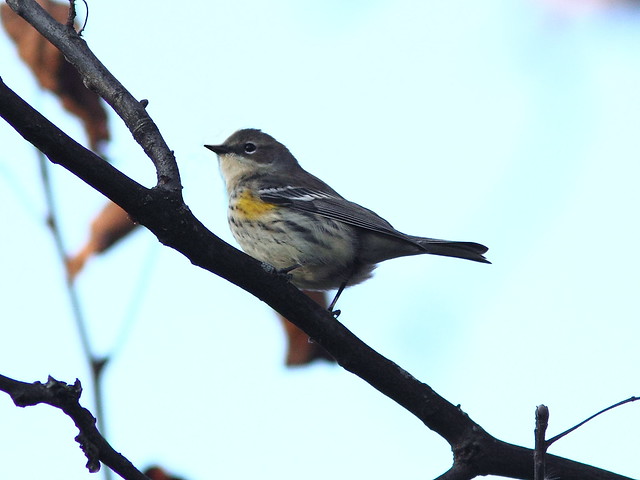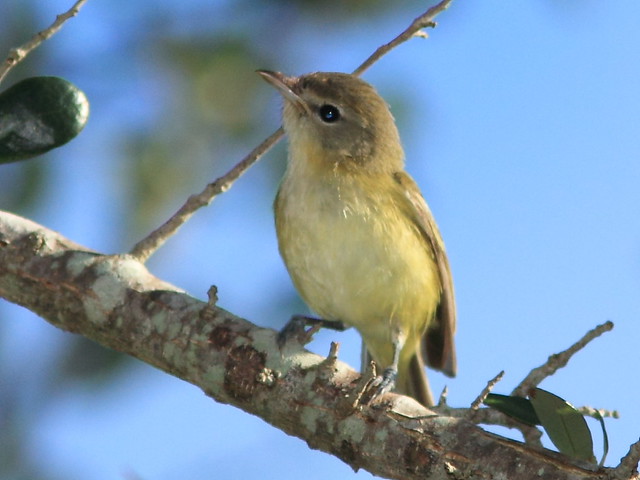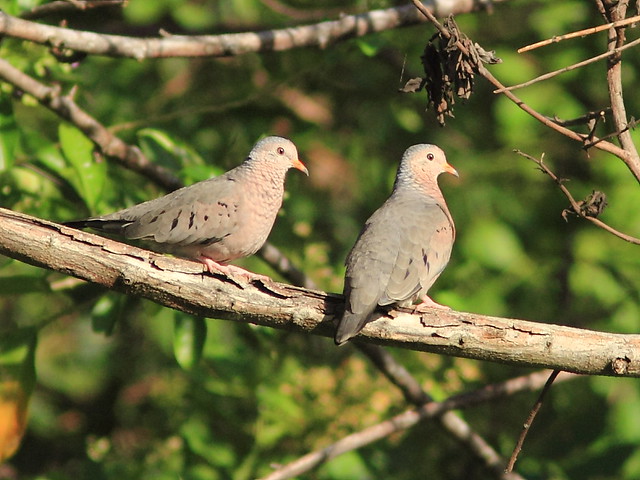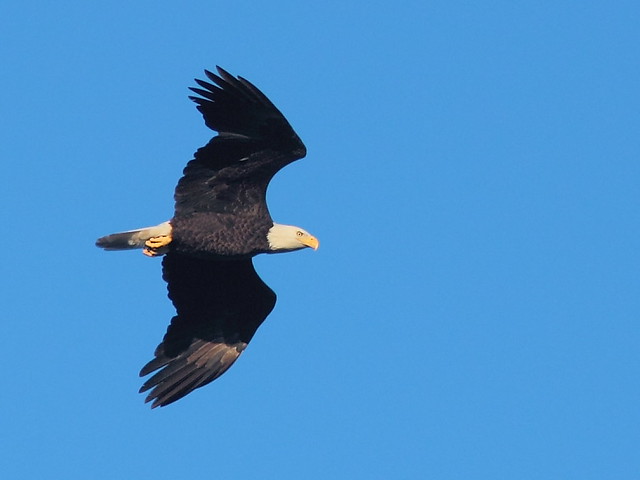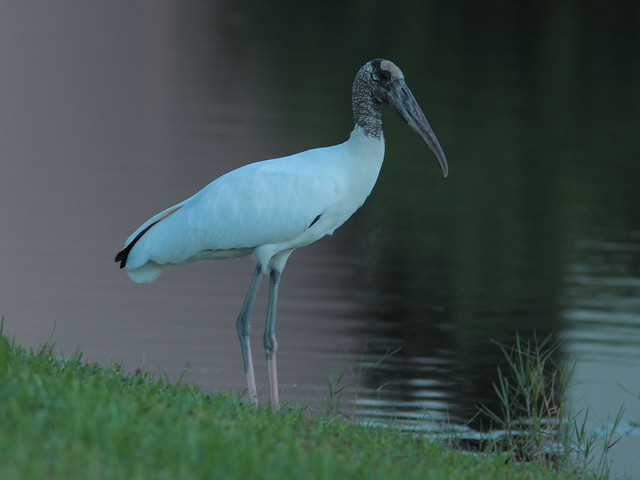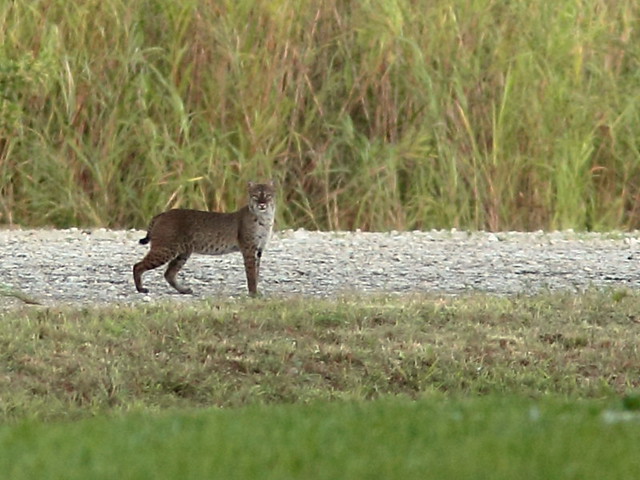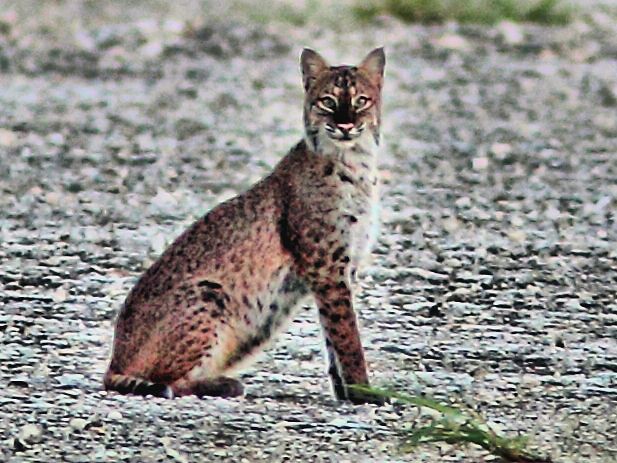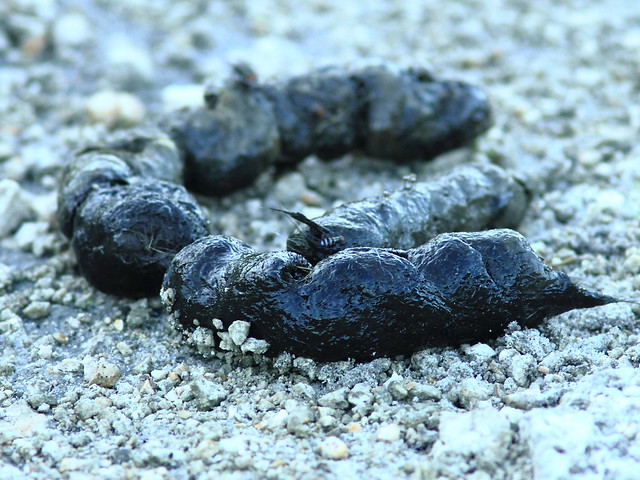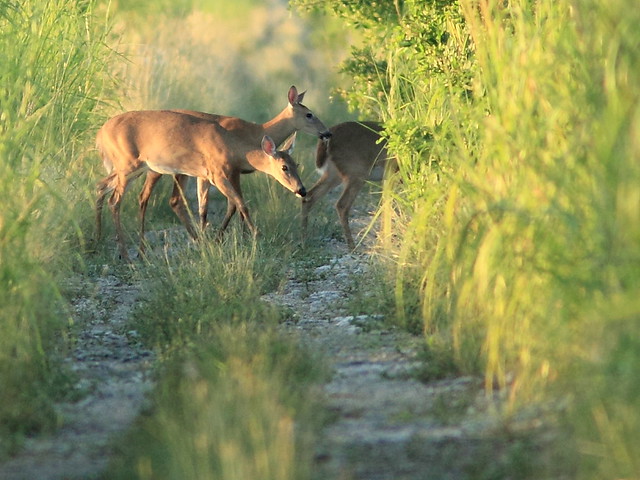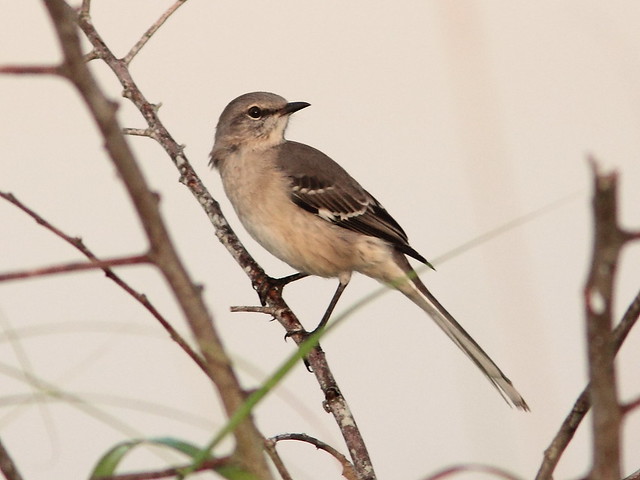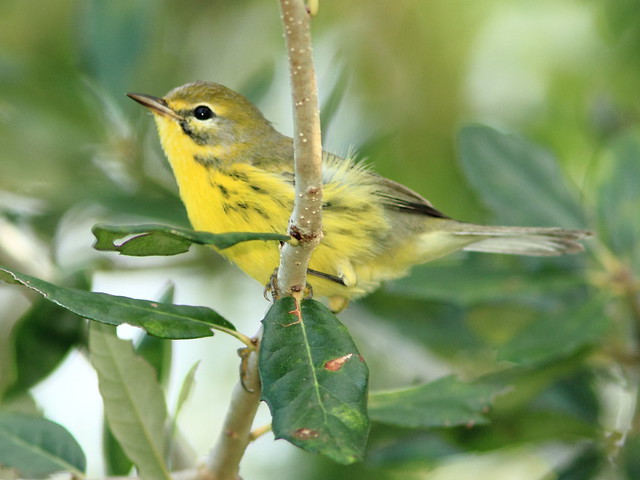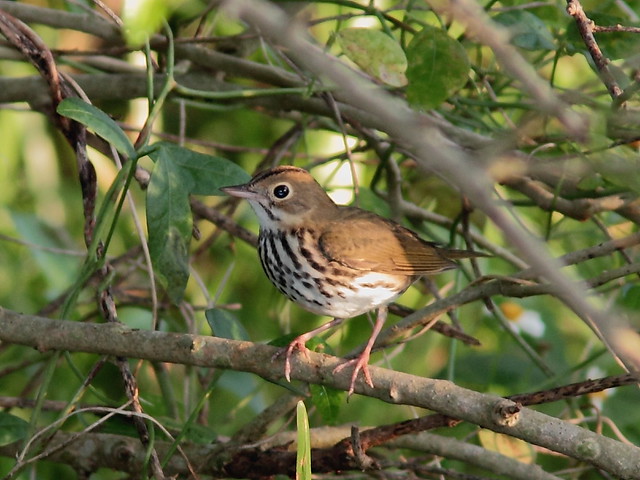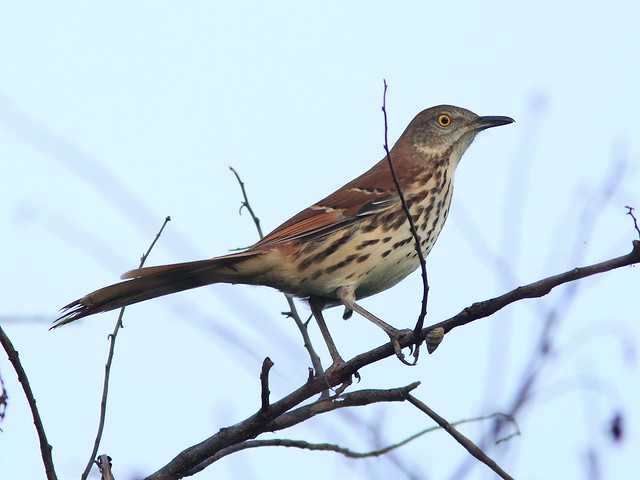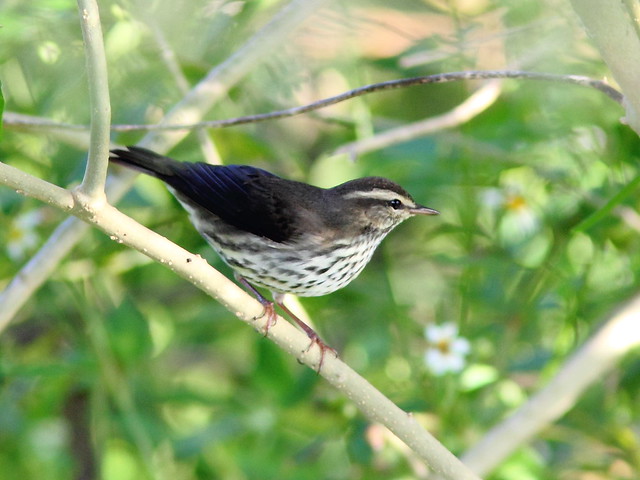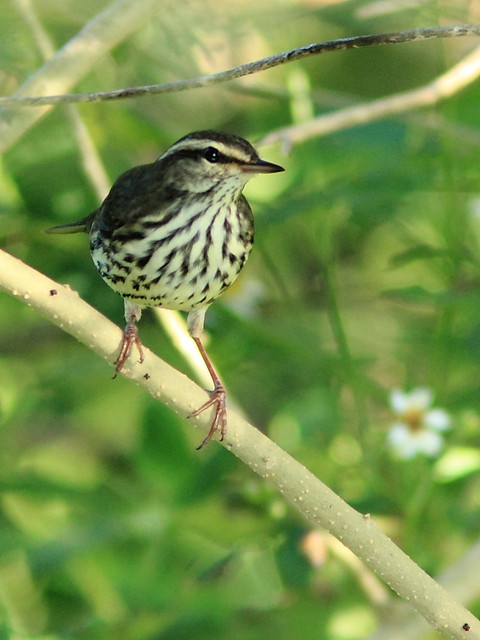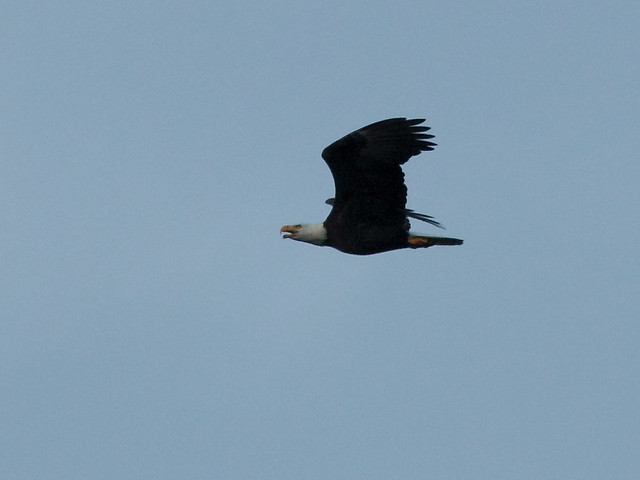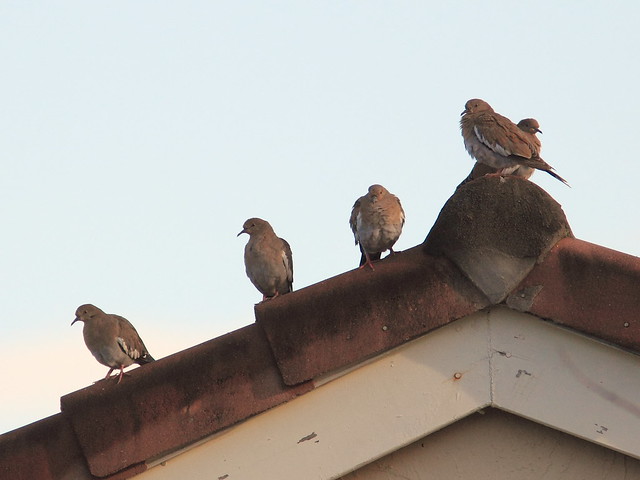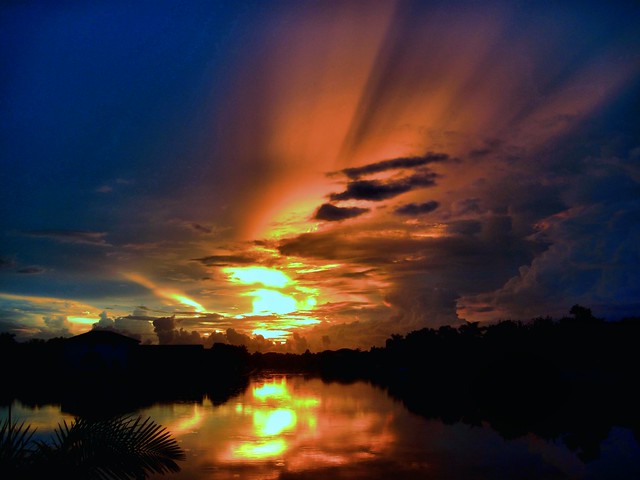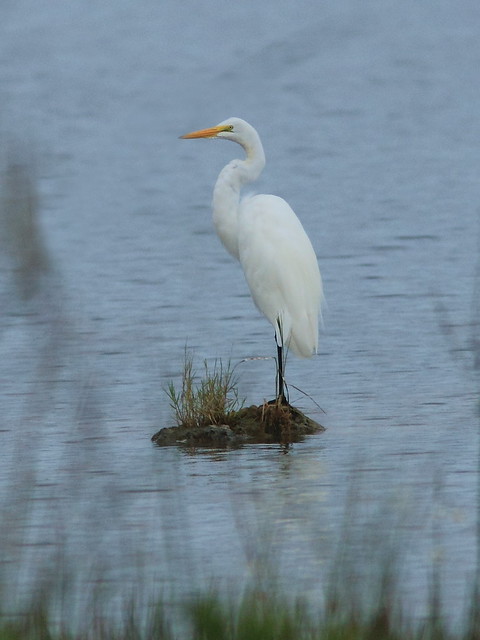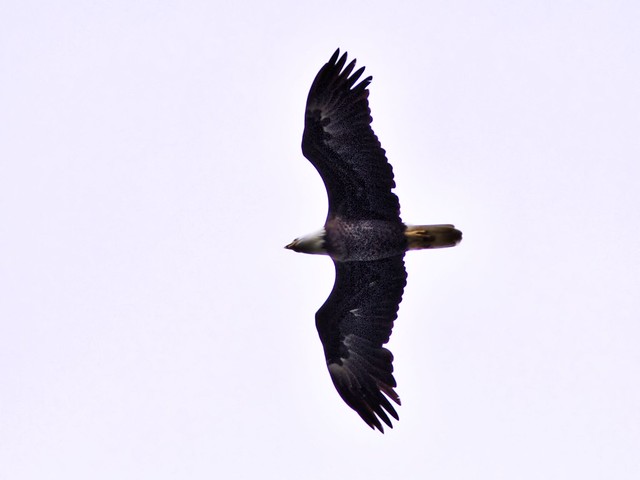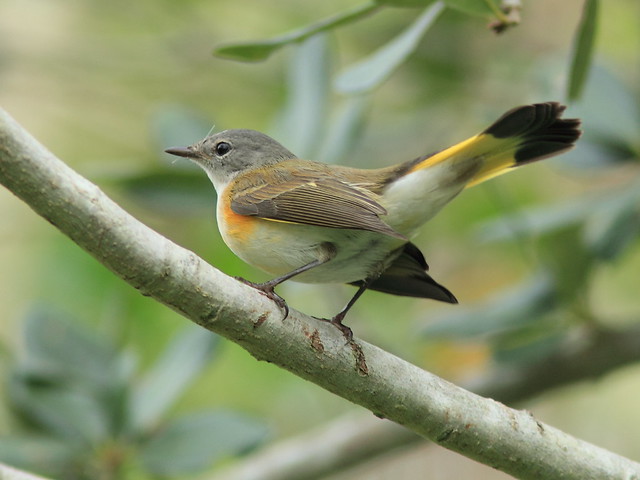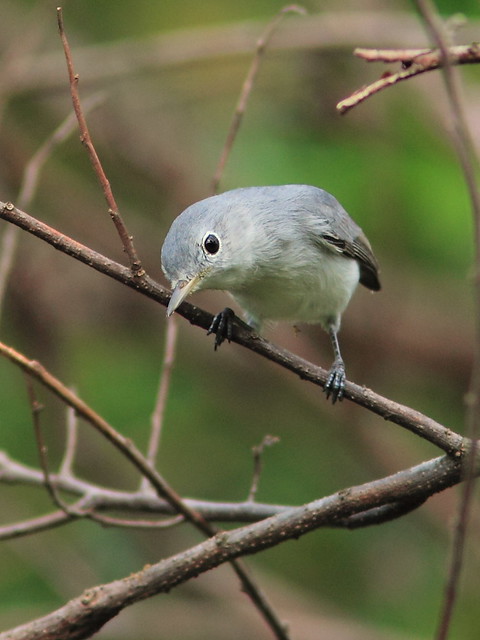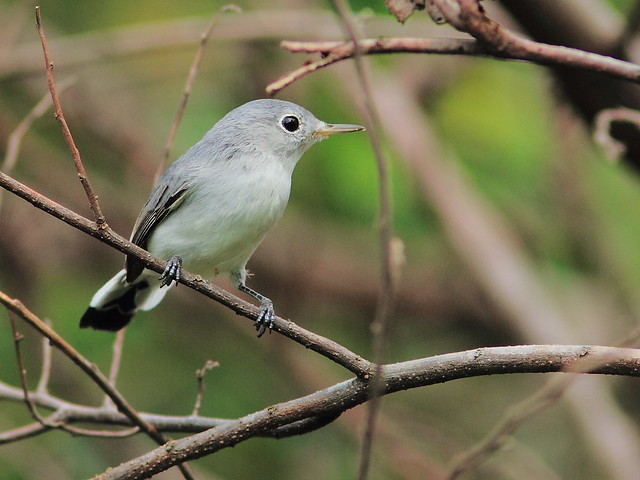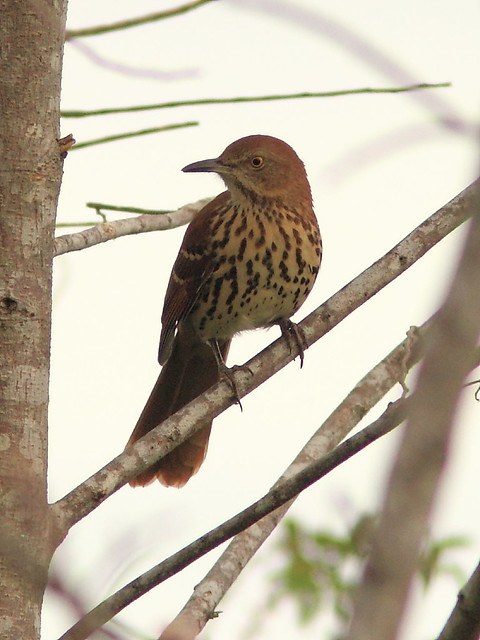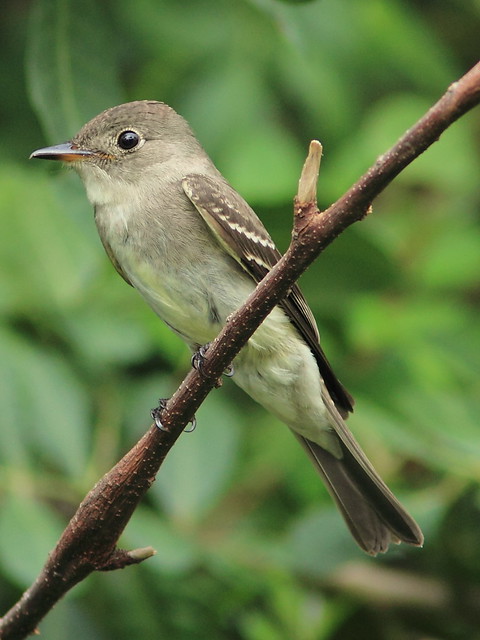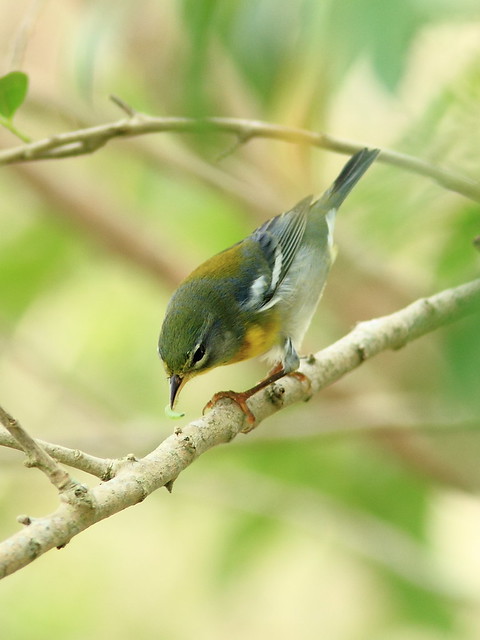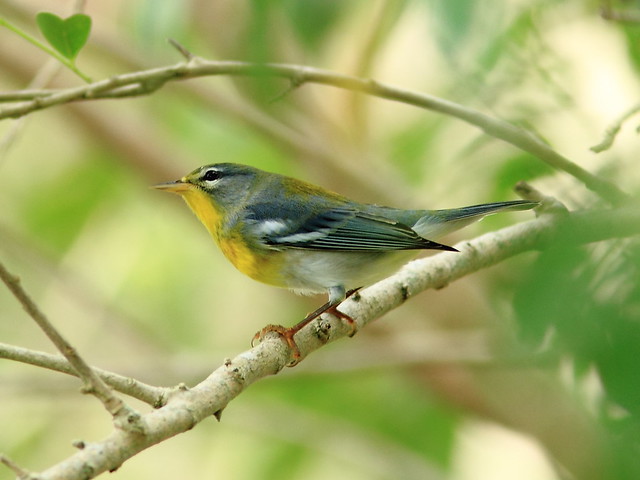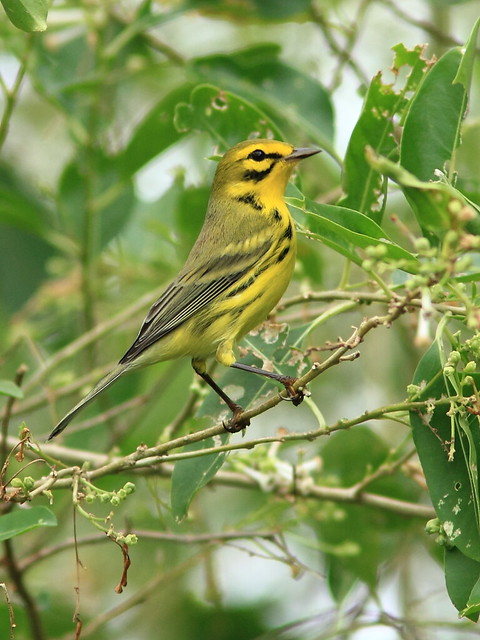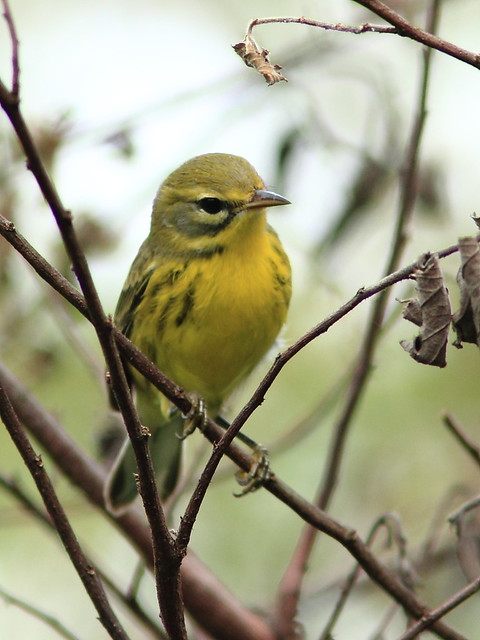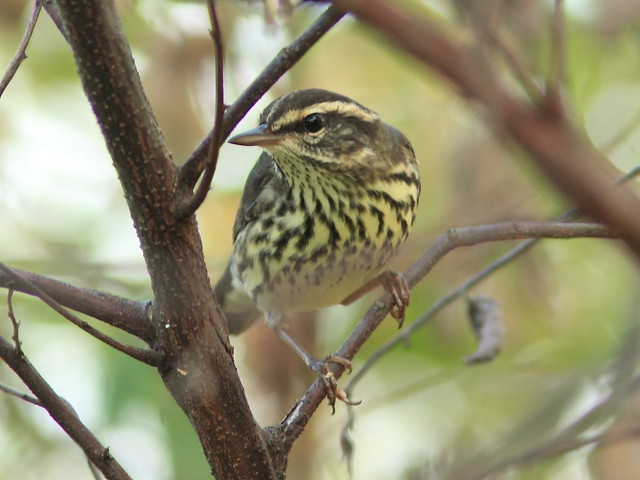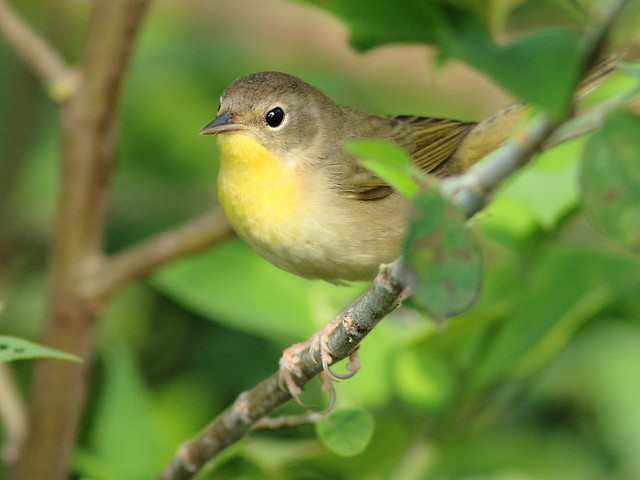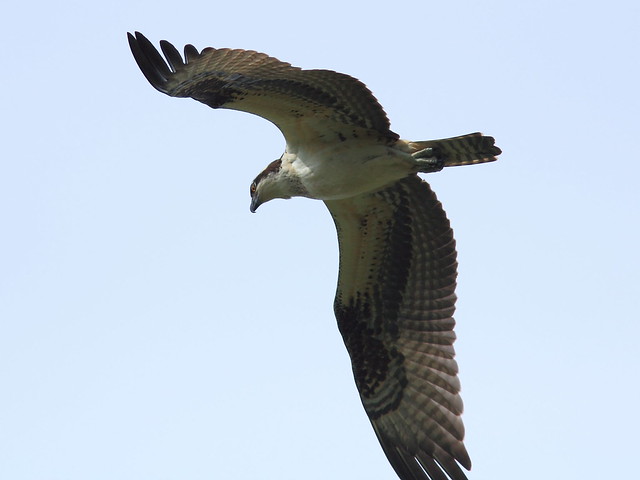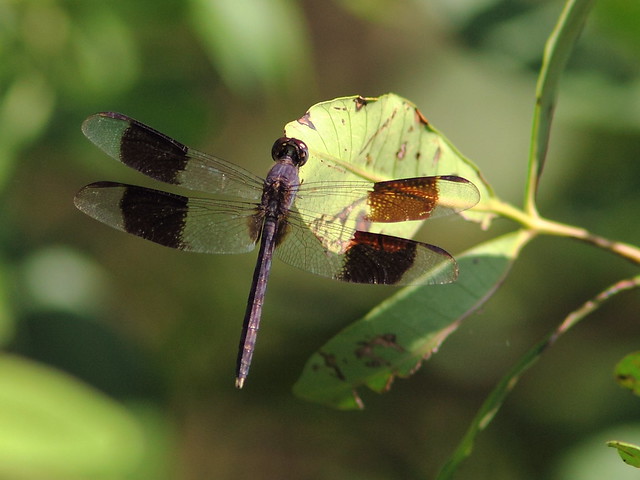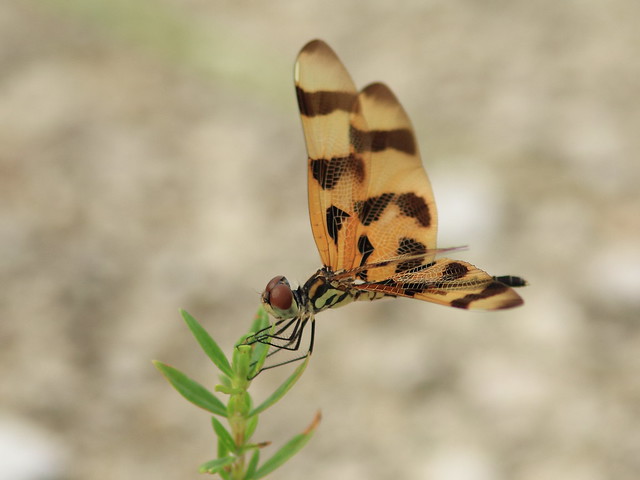Posted by: Ken @ 3:13 pm
With this post I have begun migration of my blog to a new site: http://rosy-finch.blogspot.com/
|
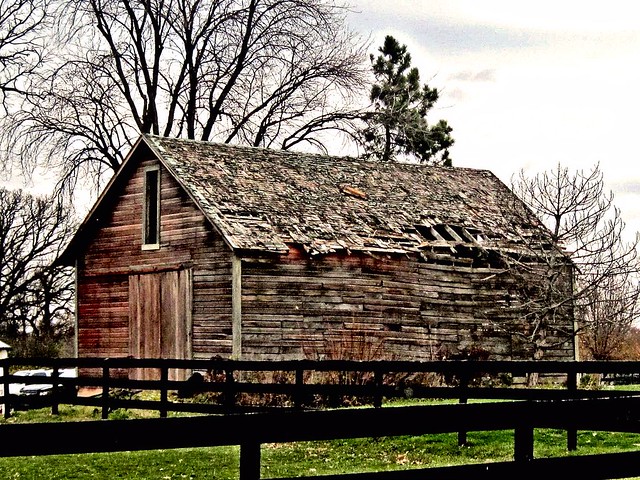
I love the texture of weathered old barns. This one is on our way to the cornfields out west of our Illinois condo.
It has been an eventful two weeks since our son-in-law Roly, while deer hunting in North Carolina, fell 20 feet from a tree stand and broke bones in both of his legs. He was admitted to a rural hospital and transferred to Raleigh. After being stabilized he was transported back to Illinois and underwent surgery a few days ago (ten screws, a metal plate and a bone transplant in his right knee area, and two big pins in the other ankle).
We had planned this unusually late trip up north because he celebrated a milestone birthday on Thanksgiving Day (which also happens to be the 55th anniversary of the day I proposed to Mary Lou!). Roly is now back in his home in a hospital bed in the great room, as he is unable to walk or climb the stairs.
He took a “walk” outside for the first time on Thanksgiving morning, with his daughters, brother, cousins and his two Tibetan Mastiffs.
The house is abuzz with relatives in from Florida and Connecticut as well as well-wishing neighbors and friends. As it turned out, it was lucky that we were here to help our daughter take care of their two daughters. His parents arrived just after the injury and will stay on to help out, so we do not feel bad leaving them for sunny Florida. We are more than ready for some mild weather!
Most of our birding has been watching the feeders from the windows and back deck of their home, as Black-capped Chickadees carried sunflower seeds off, one at a time, to crack them in the trees.
The dark “bibs” of male House Sparrows have been overgrown by gray winter fluff.
When Blue Jays arrive at the feeder, all other birds retreat.
We did get out into the field several mornings. Some “outdoor” highlights of the final weeks in Illinois included taking the granddaughters to a park a few doors from their home to see the Bald Eagles that have nested there for the past couple of years. The nest tree is just across a busy thoroughfare, opposite Hawk’s Bluff Park in Batavia. The girls crept up as far as they could to get a better look at a roosting eagle.
The park includes a woodland with some big old oak trees.
We watched the eagles until nearly sunset, when it suddenly turned very cold.
A few days before, I was with another birder when he discovered a pair of Long-eared Owls in a grove of evergreens. They were roosting near an old nest that included some fresh vegetation, suggesting that they may be setting up housekeeping. Like some other owl species, they may nest as early as late winter. We are sworn to secrecy about the location of the owls, as they are rare enough to induce crowds of birders to enter the sensitive area of their roost.
We took a few photos and quickly left them in seclusion. The camera’s automatic focus did not work because of the branches in front of the owls, and my vision is not clear enough for proper manual focusing. I was so intent on trying to focus on their eyes that I did not realize that my shots did not include the lower parts of their bodies! Although Mary Lou and I had seen Long-eared Owls previously, this was my first photo opportunity.
Mary Lou and I returned to the cornfields and this time got much better looks at Lapland Longspurs. We used the car as a blind and drove slowly toward the flock. We failed to sight any Snow Buntings, though another birder photographed one at the same location a day later.
We did see a female Rusty Blackbird foraging among the corn stubble.
A brief walk in nearby Prairie Green Wetlands preserve in Batavia produced these three Sandhill Cranes.
Numerous Canada Geese flew overhead. As common as they are, I find them beautiful in flight.
American Tree Sparrows have arrived from the north.
The tree sparrow has a rather bright brown line behind its eye that does not extend to the area in front of the eye, nicely shown in this photo.
Among the flock of nearly a dozen was a single Swamp Sparrow. Note its pale throat, the more extensive gray area on its face and the dark “mask” created by the dark edges of its cheek patch.
The somewhat similar Chipping Sparrow (photographed in our daughter’s back yard) has a dark line that passes through to the front of its eye.
Please direct any comments to the new site, or contact me directly if necessary.
DO NOT POST COMMENTS AT THIS SITE AS THEY WILL NOT BE MODERATED.
Thank You!
Posted by: Ken @ 6:10 am
Hurricane Sandy brushed by a couple of days after our departure, but otherwise we picked a terrible time to leave south Florida! The low temperatures at our Florida home are finally dipping to around 60 degrees (F), about 20 degrees warmer than the daily highs in Chicagoland.
On our first morning upon returning to our Illinois condo, Mary Lou and I got out early to the east side of nearby Nelson Lake/Dick Young Kane County Forest Preserve. We immediately encountered a flock of 20+ Purple Finches that ranged in the woodlands at the lake’s eastern edge. Only one or two were in adult male plumage. It was this fall’s first reported sighting of the northern species at Nelson Lake.
They bear some resemblance to the common resident House Finches (photos below), a few of which joined the Purple Finches. Note that the upper edge of this House Finch’s bill (the culmen) curves down slightly, parrot-like. It also has shorter wings, less pronounced facial markings, darker streaks on its breast, and a shorter tail that is not notched as strongly as that of the more robust Purple Finch.
Here is another House Finch, showing how the red color of its forehead and breast has an orange tint (”brick colored”) while that of the Purple Finch looks richer rosy-pink or purple and suffuses its head and upper back and chest (as if dipped head first in raspberry juice).
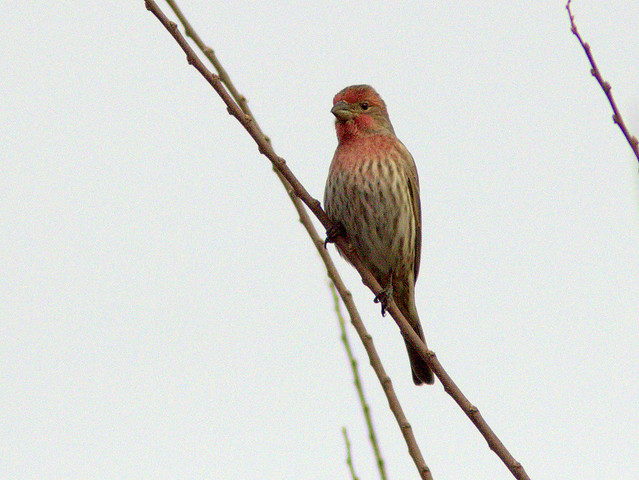
The other Purple Finches were brown females and hatch-year males. They are boldly streaked and exhibit a bright white line over their eyes and a straight culmen.
Several remained at close range as they feasted on berries.
For comparison, here is a photo of a female House Finch. Its face is noticeably plain and its streaks are less well-defined against a grayish background.
A Brown Creeper worked its way methodically up the trunk of a tree.
In typical fashion, the creeper flew to the bottom of an adjacent tree and again moved upward, while a White-breasted Nuthatch (”upside-down bird”) tended to do the opposite. Between the two species, both the upper and lower areas of the crevices in the bark are more thoroughly gleaned.
The first Saturday of each month is “Scope Day” a Nelson Lake. Despite freezing temperatures, about a dozen birders showed up. The lake shore usually extends much more closely to the viewing platform, but this year’s drought has taken a toll.
It was nice seeing (Slate-colored subspecies) Dark-eyed Juncos, hardy little winter visitors who do not make it down to south Florida. This one seemed to have indistinct wing bars, suggesting it might have some of the White-winged subspecies in its lineage.
Fox Sparrows were present in good numbers, many of them singing as if it were spring.
We saw a flock of seven unidentified swans, but they disappeared behind the trees before I could raise my camera. Canada Geese flew across the same area of sky. A hot air balloon added interest to the scene.
I also captured a pair of distant Sandhill Cranes in flight.
Hundreds of Common Grackles and other blackbirds, mostly Red-winged, flew overhead. Among them could be heard the calls of Rusty Blackbirds, a species I had seen before but never photographed. Luckily, a flock settled in a nearby tree, and I could pick out a few of the brownish Rusty species. They are slightly larger and have longer tails and more slender bills than Red-winged Blackbirds, but are smaller than grackles. Their pale eyes contrast with their dark faces.
A species of conservation concern, the Rusty Blackbird population is declining. There is no clear explanation as to why their numbers have significantly decreased 90% over the past 30 years, both in their breeding grounds in far northern boreal forests and in their winter range. Theories about the cause of the drop in population include destruction of winter and or breeding habitat and acid rain (read more here). Even though they associate with the Red-winged species, the Rusty Blackbirds often stay slightly away from their relatives, making them stand out.
It’s always nice to see American Robins, as they do not nest in south Florida and only show up there irregularly during the winter.
The past two weeks have been very eventful here in Illinois, limiting our time afield (as well as computer face time). Our son-in-law was deer hunting in North Carolina and fell as he was climbing into a tree stand. He broke bones in both legs and after he was stabilized was flown back to Illinois. Since he fell from a height of 20 feet, he is lucky that he landed on his feet rather than his head or back, as he could have been paralyzed or killed. He needed surgery (ten screws, two pins, a metal plate and cadaver bone transplants) on both legs and got out of the hospital only yesterday. We have been busy minding our two granddaughters.
We are looking forward to our return to Florida, where our local pair of Bald Eagles is preparing to start a family. Here is one of the pair that I photographed last breeding season.
Posted by: Ken @ 7:09 am
Just before departing Florida for our second home in Illinois, we managed one final walk in our local wetlands patch. Warblers were still coming through, but not in great numbers. On some days Northern Parulas were common, but we saw only a few.
They all were brightly colored males. Their foraging habits are methodical, as they usually explore one limb at a time, starting at the base of a branch and working out to the very tip. They sometimes emerge into plain view before flying to the next branch, providing photo opportunities.
Prairie Warblers are seen here all year, but their numbers are swollen during migration and winter by temporary visitors. They also tend to spend much time in a small area of a tree, but are not as predictable in their movements.
In quite the opposite fashion, the movements of American Redstarts are totally unpredictable. Many of my attempts to photograph them produce only empty branches. This sweet little female redstart paused just long enough for me to capture her beauty and energy.
This fall, Black-throated Blue Warblers have been favored subjects. The
males have strongly contrasting blue, black and white plumage. They often appeared in small same-species flocks.
I really liked the feather detail in this pose.
Warblers are attracted to fruiting shrubs, usually for the insects they attract, but both the parulas and this Black-throated Blue Warbler have a taste for privet berries.
Female Black-throated Blue Warblers do not resemble the males except for the white mark on each wing.
The face pattern of females is distinctive.
Two Yellow-throated Warblers showed up on our final walk. This was only the second time I had seen this species in our patch.
Common Yellowthroats were, well, common! Usually shy and retiring, their movements are difficult to track as they creep through the low shrubs and tall grasses. The fruiting privet (Ligustrum sp.) lured them into the open, but they seemed interested only in the associated numerous spiders and other insects.
The female yellowthroat lacks the black mask of the male.
Palm Warblers have arrived and will be here all winter. Our local visitors belong to the drab western subspecies. Interestingly, their migratory path crosses that of the more colorful eastern population, which winters in Texas and Mexico.
The Palm Warbler’s long legs are an adaptation to its habit of foraging on the ground. Early morning light enhanced the color of this one.
Another long-legged warbler, the Ovenbird, walked up almost to my feet before I saw it.
We departed Florida before seeing our first Yellow-rumped Warbler, the avian equivalent of the “fat lady” who sings at the end of the opera. Migration is not over until the “butterbuts” appear. We did catch this one the first morning after we arrived in NE Illinois, at local Nelson Lake. Sure enough, it was the only warbler we encountered there.
Of course, we saw many other interesting birds besides warblers during our final week in Florida. A Bell’s Vireo showed up once before, in October of 2009. Although it is a western species, it is a rare but fairly regular visitor to South Florida during spring and fall migrations
A pair of Common Ground-Doves posed in the early morning sun.
Blue Jays collected Live Oak acorns from the bumper crop.
Blue-gray Gnatcatchers can be a pesky distraction when we confuse them with the warblers as they they flit among the branches. However, they also seem to be “magnets” for other migrants, perhaps alerting them to food sources.
Bald Eagles regularly pass overhead just after sunrise, traveling from their nest area two miles to the north, to hunt for fish and water birds in the large lake in our subdivision. They are out earlier on clear mornings, probably because of better visibility.
The songbirds fell silent as a Cooper’s Hawk flew overhead.
A single adult Wood Stork has visited our backyard lake several times during the past month. As if to bid us adieu on the morning of our last day in Florida, a flock of six flew in while it was still dark. I had to wait to take these shots. By then only one remained on our back lawn and the others had flown to the other side of the lake.
Posted by: Ken @ 1:00 pm
It was about 15 minutes after sunrise and cloudy when Mary Lou and I approached the bend in the road at the junction of the unpaved portions of Miramar Parkway and SW 196th Avenue. I had pre-set the ISO at 800 (aperture open all the way to f/5.6) but did not expect to take any photos until after we completed the fast-paced “aerobic” mile into the wetlands adjacent to our subdivision. Only about a quarter mile into our walk, we suddenly saw a Bobcat standing almost in the middle of the road, about 100 yards away.
This was the first time one had posed out in the open roadway like that. We slowly moved up to about 50 yards before the cat fled. Unfortunately, I had kept the camera in an air conditioned room, and the lens fogged up pretty badly in the stifling heat and humidity. I wiped them a few times, but the quality of all the photos suffered.
This was about the sharpest image I got, so I processed it a couple of different ways. The above one is made up of four layers on the cropped original RAW image, each with a different exposure compensation (-1.0, -0.5, +0.5 and +1.0), thus producing an HDR-like effect. The cat suddenly fled towards the levee path that follows south along the 196th Avenue Canal.
I followed the Bobcat’s retreat route up along the levee path, but never caught sight of it again. However, I found very fresh Bobcat scat. The Bobcat dropped these feces out in the open with no attempt to conceal them, suggesting it was a male. Females usually deposit it less conspicuously and often scratch dirt over it as do House Cats. Note heavy black “tar” color due to digested blood, characteristic “Tootsie Roll” segmentation, large bore (~1 inch), inclusion of much hair and few bone fragments.
Three female White-tailed Deer appeared up ahead and walked towards me. I stood motionless , but the sun was getting higher and I became uncomfortably hot and finally started to move into a shady area. This frightened the does. It is a treat to see them here, as they are not very abundant.
I gave up my attempt to stalk the Bobcat and checked out the birds. A Loggerhead Shrike looked down at me from the top of a shrub.
Moving back down the what is left of my “Fake Hammock,” I took a spot in the shade and waited to see which birds might show up. This Northern Mockingbird was one of several moving about.
Predictably, a Prairie Warbler came out of hiding.
An Ovenbird peered out from the deep foliage.
Several Brown Thrashers have congregated in this area, more often heard than seen. This one flew out into the open.
A pair of Common Yellowthroats busily foraged in the low vegetation. The male briefly came out into the light.
Palm Warblers have arrived in good numbers. All are of the somber Western subspecies. Oddly, the east coast birds turn to the southwest before reaching Florida and the Gulf of Mexico, on their way to spend the winter in Texas and Mexico. Their paths cross with the western population, which flies SE to winter in Florida and Cuba. They reverse the criss-cross pattern when returning north in spring.
Suddenly a Northern Waterthrush walked out of the darkness unto a small limb, its tail slowly bobbing characteristically.
The waterthrush paused to look me over before flying off.
A Bald Eagle flew over, tracking a perfect line from its nesting area two miles northwest in Pembroke Pines to the large lake in our subdivision. For updates on our local eagle nest, visit my Bald Eagle Nest Watch FORUM.
On the way home, I saw several White-winged Doves lined up on a neighbor’s roof.
Posted by: Ken @ 8:33 am
We returned to our south Florida home one week ago, and it has rained every day. The weather allowed us only two short forays into the wetlands adjacent to our home.
This morning’s sunrise was typical. Light rain was dappling the surface of our lake and a thunderstorm was moving in from the southeast (right) as I took this photo from our patio.
Local birders have been reporting decent numbers of warblers migrating through our area, so they were my main objective on our first morning out. Along the unpaved road that leads into the wetlands, I got a quick shot of a Great Egret.
An adult Bald Eagle flew over towards our subdivision from the direction of its nesting area about a mile away in Pembroke Pines.
After Mary Lou and I finished the “aerobic” portion of our walk along the gravel road, I stayed behind at the place that I formerly called the “Fake Hammock.” It is now only the ghost of its former glory days, as all the large trees were cut down by recreational RV users who built a fire pit in the center of the small clump of trees and shrubs.
After an absence of over six weeks, I was disappointed to find that the clear shady area under the canopy where I used to sit and wait for the birds is now in full sunlight with grasses and vines up above my chest. Since I did not have my snake boots I did not venture inside the “hammock.” Instead I birded its margins. The morning light was nearly perfect.
The first warbler to appear was an American Redstart.
An inquisitive Blue-gray Gnatcatcher approached quite closely.
Four Brown Thrashers had gathered to feast on the berries of a Trema tree nearby.
I had trouble identifying this flycatcher as it seemed rather small, suggesting it was an Alder Flycatcher rather than an Eastern Wood-Pewee. However, its peaked head and slight hook at the end of its bill confirmed it was the latter species. Click on the image for more photos and discussion of its identification.
This male Northern Cardinal has nearly finished its post-breeding molt and looks good in his fresh coat.
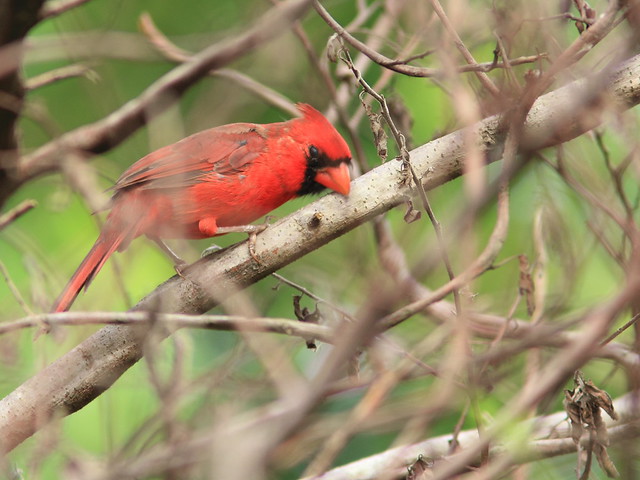
On my second visit to the hammock area I saw more warblers. A Northern Parula made its first appearance.
Prairie Warblers provided some splendid views. Here is a male.
The female Prairie Warbler has more subdued markings, but I liked this pose.
A Northern Waterthrush paid a brief visit. I was lucky to catch it through the foliage.
A female Common Yellowthroat was likewise quite elusive.
When I was about to leave, I was startled a very loud splash in the nearby canal. I spun around to catch a parting shot of the unsuccessful fisherman, an Osprey.
Not to be overlooked was this Band-winged Dragonlet…
…a Zebra heliconian…
…and a Halloween Pennant.














